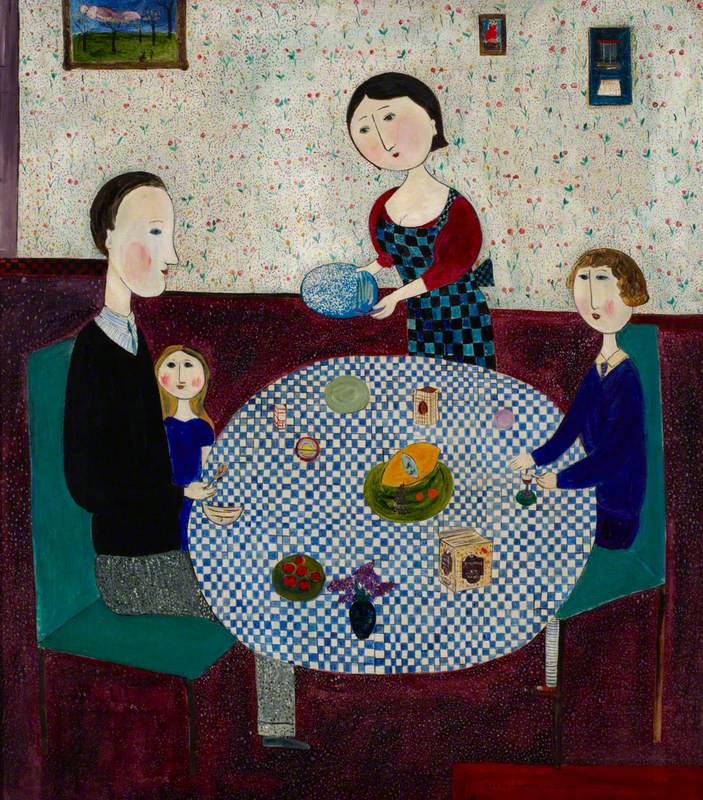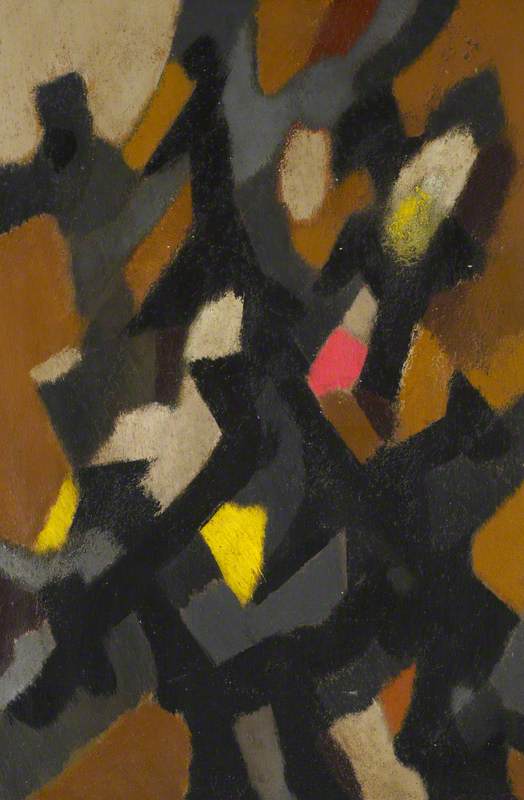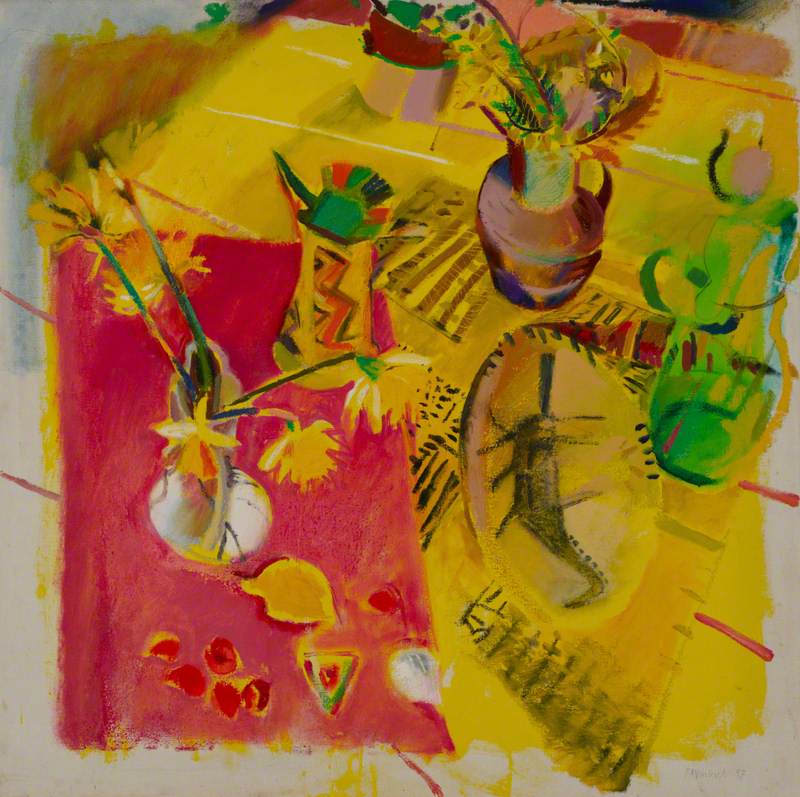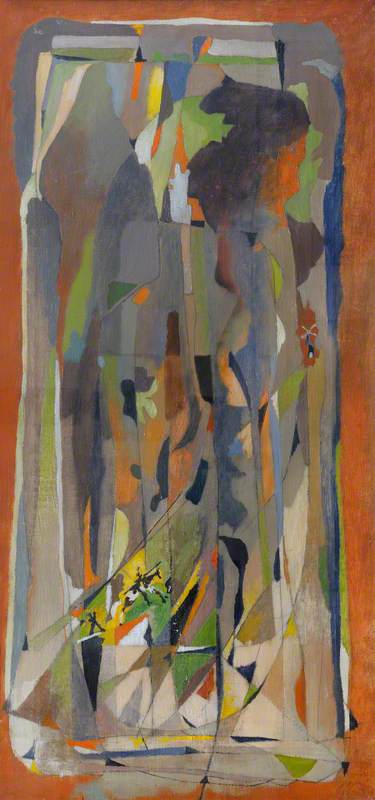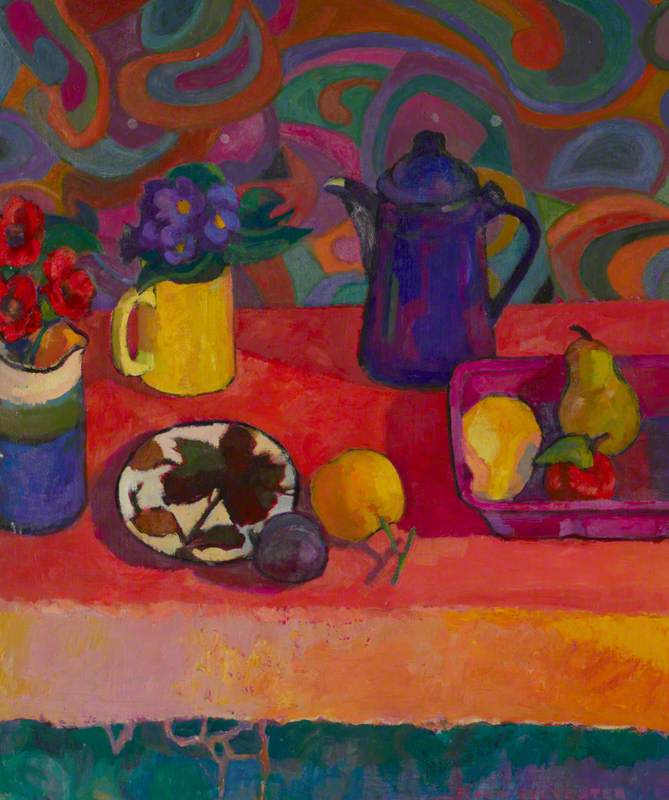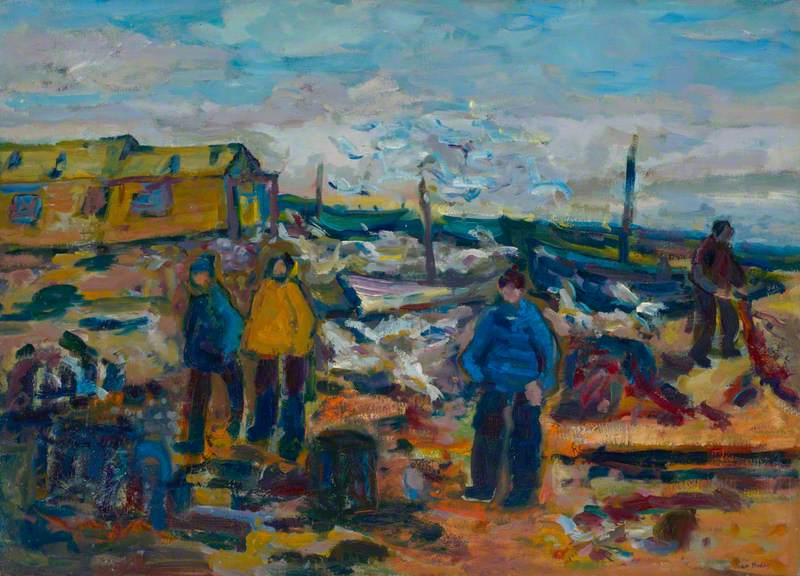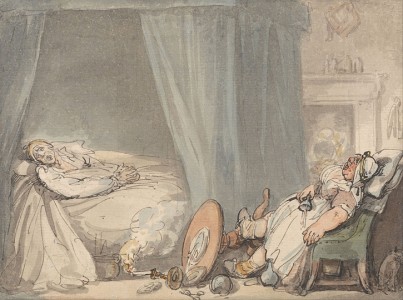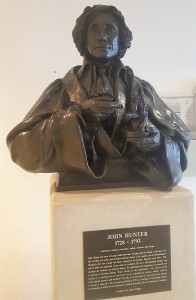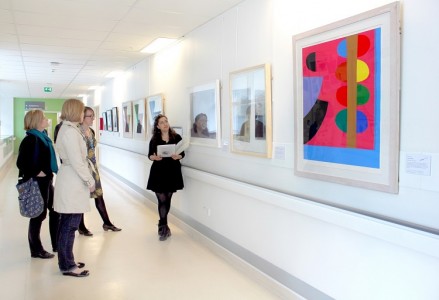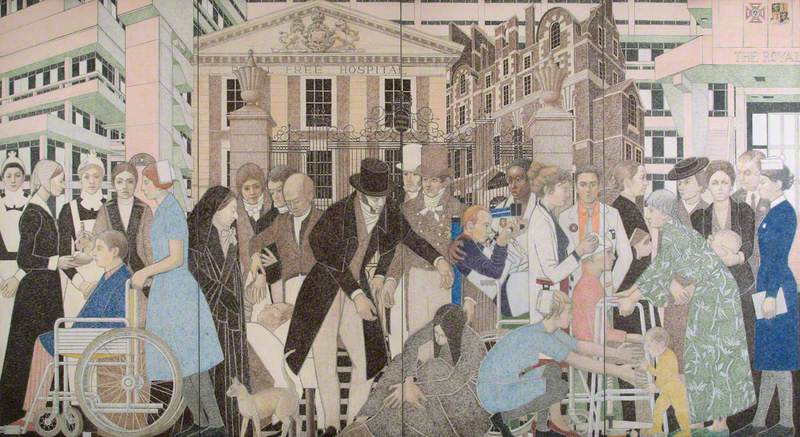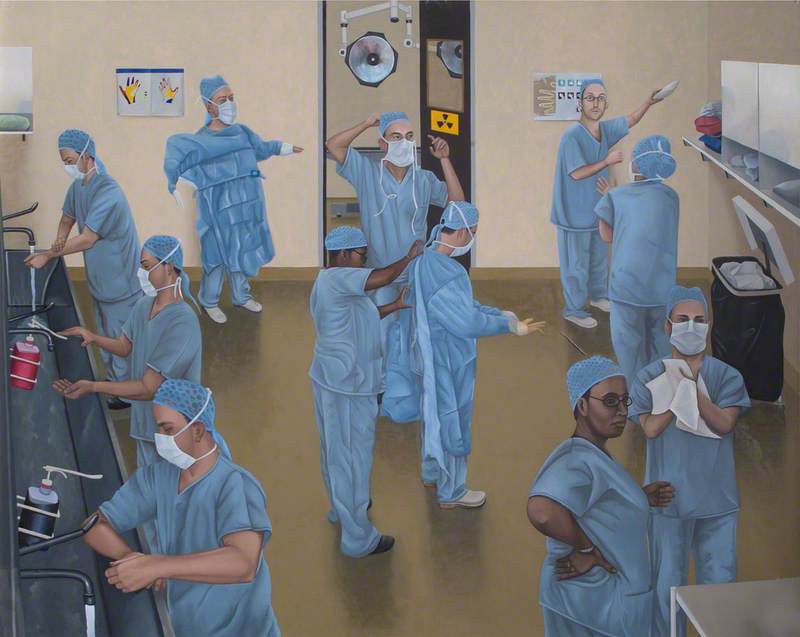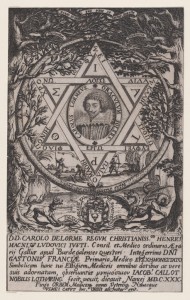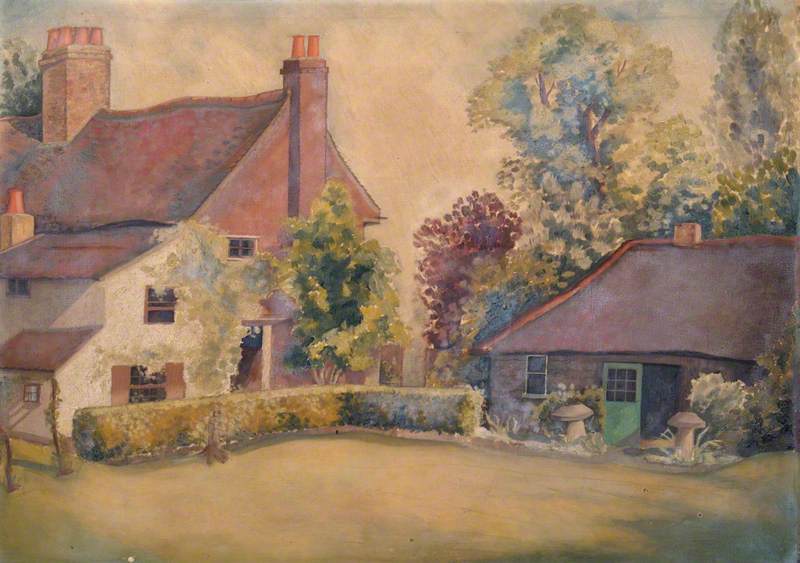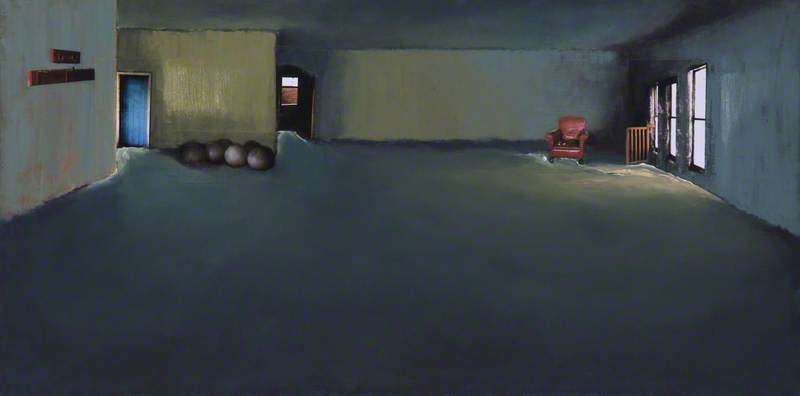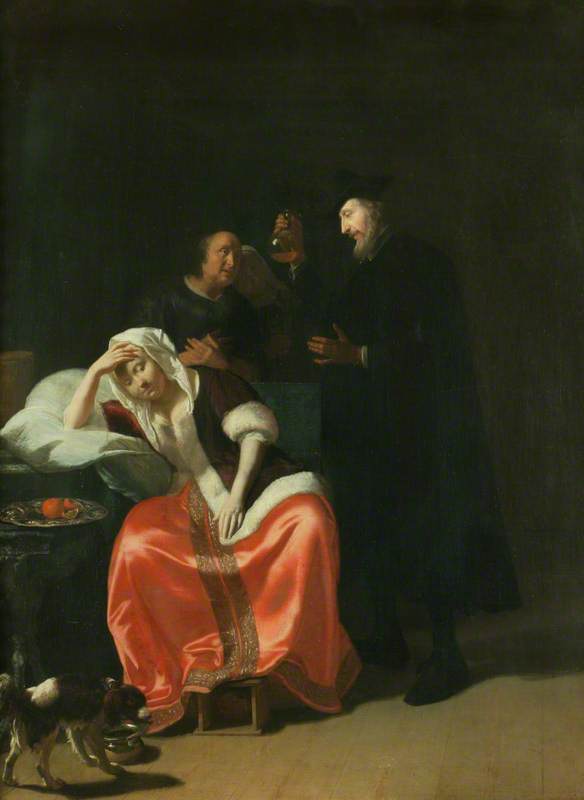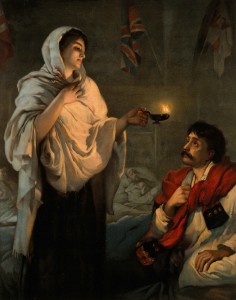At the start of November 2014, I became the new Director of the charity Paintings in Hospitals. I was drawn by the potential of seeing what a huge difference the presence of art could make to people at difficult and stressful points in their lives. In joining, I saw an opportunity to both help the charity grow, and also advocate for all who believe that art can help people get better.
Though Paintings in Hospitals, set up in 1959, was one of the first national organisations to act on the links made between art and health, the ideas behind our charitable purposes are hardly new. The ancient Greeks made links between art and healing, as they believed that being in contact with statues and mosaics could heal both the body and the mind.
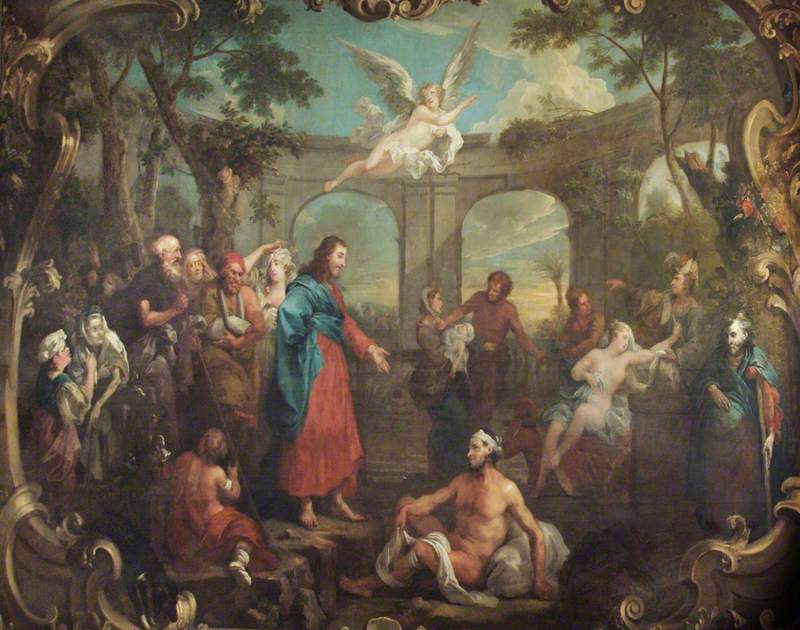
Image credit: St Bartholomew’s Hospital Museum and Archive
Christ at the Pool of Bethesda 1735–1736
William Hogarth (1697–1764)
St Bartholomew’s Hospital Museum and ArchiveIn 1735 William Hogarth painted a large mural for the staircase at St Bartholomew’s Hospital, London (Christ at the Pool of Bethesda). Over 150 years ago, Florence Nightingale stated in her Notes on Nursing that ‘the variety of form and colour in the objects presented to patients have a physical effect and are actual means of recovery.’ Though care sites are, by scientific measures, poles apart from those Nightingale worked in, the principle she observed remains very pertinent to our work today.
Paintings in Hospitals began, as our name suggests, by exhibiting a small number of paintings in hospitals. We have since grown an exceptional, museum-quality art collection of nearly 4,000 works, from artists of national importance including Mary Fedden, Ben Nicholson and Patrick Heron. Our collection has been carefully and continually developed for the specific purposes of helping to reduce sickness, anxiety and stress. We learn iteratively from patients and carers, and work closely with the art world. We now have four audience-focused loan schemes specially curated for this purpose – Art for Everyone; Art for Older People; Art for Children and Young People; and Art for People with Autism. We have also begun working with health partners and artists to implement creative activities in care facilities across England, Wales and Ireland. Our work and activities are now experienced by over one million people nationally in hospitals, hospices, care homes, surgeries, wards, therapy centres and special educational needs schools, annually, across the UK.
In recent years, a growing number of patients, professionals, researchers, policy makers and architects have recognised that arts are integral to health and wellbeing. There is an increasing body of evidence, which shows that art (whether hung on the wall or multi-sensory), creative activities, and music, poetry or performance, all help to improve people’s sense of wellbeing.
In 2004, Dr Rosalia Staricoff published A Study of the Effects of Visual and Performing Arts in Healthcare (Chelsea and Westminster Hospital). Staricoff’s study concluded that placing original artworks within healthcare environments helped to: reduce levels of anxiety, stress and depression; reduce patients’ length of stay within hospitals; reduce use of medications; and also increase staff morale.
Studies since, such as that by Rice & Bedminster Practice (2008) published in the British Journal of General Practice, added to this, showing that improved environments can now be easily associated with improvements in patient-doctor communication and an increase in patient and staff satisfaction levels.
We are continuing to add to this body of research. At the end of 2015 with funding from the Shirley Foundation, we worked with the Helen Hamlyn Centre for Design at the Royal College of Art on ‘Artworks I Like’, a study exploring the artwork preferences of people on the autistic spectrum. We analysed responses to specific artwork categories, including: animals, landscapes, realism, shapes, and abstraction. This analysis generated a set of 17 artwork ‘principles’ that were qualified by a further round of expert interviews. The results have given us a number of insights into preferred types and qualities of artworks, and new ways to use art to create more positive environments. We can now better engage with and provide art to support people with autism.
The NHS now endorses much of what we and others have found: that there is no doubt that the presence of art enhances stressful and often cold, clinical surroundings, helping to alleviate anxiety, stress, and to promote positive thought, calmness and dialogue.
We believe that art should be in all health and social care sites because it helps to make people feel better, allowing patients to leave hospital and social care sooner, and staff and carers to have moments of respite from their crucial jobs.
As someone passionate about the difference the arts can make to people’s lives, I am thrilled to be working with our Board and dedicated team, and to be building on partnerships, such as that with Art UK, to expand the reach and impact of both Paintings in Hospitals, and the arts in health, over the coming years.
Ben Pearce, Director, Paintings in Hospitals
Paintings in Hospitals receives no government funding and depends on support from charitable trusts, individual donors and businesses to continue its important and vital work.
